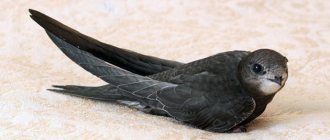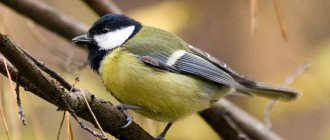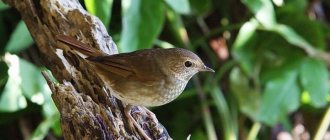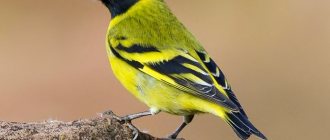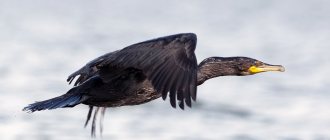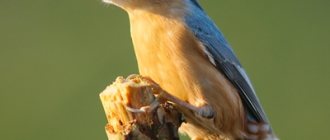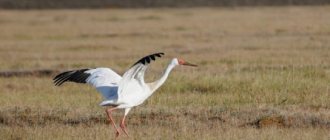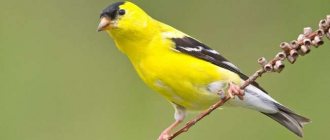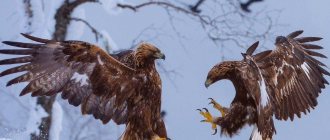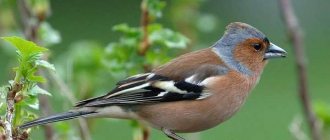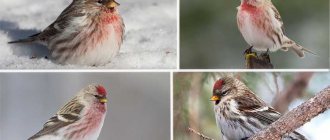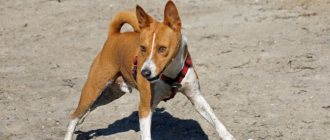The rook is a bird belonging to the corvid family. These birds are distinguished by unique mental abilities. Like their close relatives, crows, they find many ways to get better access to a particular food. People living in the northern regions noticed in ancient times that these unique birds are the first to arrive, signaling the arrival of spring warmth. It is this fact that has made people more tolerant of these creatures, in contrast to their close relatives, crows, which are considered harbingers of bad events.
Rook is a bird belonging to the corvid family.
Over hundreds of years of coexistence next to humans, the habits of some rooks have undergone significant changes. Often, birds that should fly to regions with a milder climate remain in cities in the fall, since despite the severe cold they can find sufficient food here. Knowing the description of the rook, you can easily distinguish it from the crow. Many features of the life of these amazing creatures became known only relatively recently.
These birds have unique mental abilities
Appearance
— Advertising —
Rook walks on the grass
The rook is a typical representative of corvids. The bird is slender in build, with long legs and an equally long beak. The plumage is black, shiny with a blue tint. The bottom layer has gray fluff, which prevents you from freezing in cold weather. The bird's feathers are dense and hard. Thanks to the sebum that lubricates the feathers, they become waterproof. In flight, thanks to its streamlined feathers, the rook reaches speeds of up to 85 kilometers per hour.
The important rook thought
The rooks take off. In flight, birds often flap their wings and rarely soar. Rooks have highly developed flight muscles (18.5% of body weight) and a large heart (12% of body weight), which allows the birds to make long flights. The bird's beak is thin and long, very strong, it is capable of cracking nut shells. The beak of young animals is black, but with age its color becomes lighter and acquires a gray tint. At the base of the mandible there is a small receptacle (gular pouch) for food, in which birds carry food to the chicks. In the area at the base of the beak, small thin feathers grow, which fall out with age. According to ornithologists, feather loss is not a pathology, but a necessity. Perhaps this makes it easier for birds to determine the ambient temperature. According to another version, a bare area is easier to keep clean: rooks feed on waste, which increases the risk of infection. It is easier for birds to “wash” skin than down and feathers.
— Advertising —
Rook sits in the grass
The young rook looks like a black crow. You can distinguish a rook from a crow by its thinner and straighter beak and elongated feathers on its legs and sides that stick out to the sides.
Appearance and features
Photo: Rook bird
Not every modern person can distinguish a rook from an ordinary crow. These animals are really similar, and from a distance it is easy to confuse them. However, it is not difficult to recognize a rook up close.
It has characteristic external features:
- an adult rarely reaches a length of fifty centimeters. The average length is forty-seven centimeters, which is less than the size of a crow;
- the plumage has a pure black tint. Only in the sun can a bird glow purple. This is due to the fact that the bird's body secretes sebum. It lubricates the feathers, making them shiny, waterproof and dense. This feature helps these animals during flight. Thanks to sebum, rooks quickly develop speed and endure long journeys more easily;
- The beak of rooks is short, thin, strong. This is an essential feature of this species of bird, distinguishing it from other representatives of corvids. Young rooks have beaks painted a bright shade of black. But over time, the color fades and becomes gray. This is due to the fact that animals dig a lot and often in the ground;
- strong paws. The paws of this bird have tenacious claws and “panties” at the top. “Pants” are formed from small feathers;
- developed, strong muscles. The bird's musculature has high natural characteristics. About nineteen percent of the total body mass is occupied by flight muscles. This allows the animal to move deftly through the air and quickly gain speed;
- sharp, almost thorough manner of flight. Looking at the sky, these birds are easy to distinguish from others. They fly beautifully and maneuverably. Also, their feature is the ability to quickly take off from a standstill. Crows require a short run to take off. They have to flap their large wings quickly and heavily to gain height.
What do rooks eat?
A rook holds a nut in its beak.
Birds are omnivores. Rooks hunt small insects and eat their larvae and eggs. They search for food in the ground using their long beak. In summer they feed on cockchafers, worms, frogs and small snakes. When there is a shortage of live food, they prefer to scavenge in landfills and feast on food waste and maggots.
— Advertising —
Rook in the garden
Accumulating in numerous flocks, rooks often harm summer residents and gardeners. Birds peck at crops, eat sprouts and berries, and dig up grains. At the height of the season, a group of 20-30 rooks with their actions can cause irreparable damage to the garden.
Nutrition
It is believed that the rook is a useful bird because it feeds on insect pests. In spring, rooks gather in flocks in fields and vegetable gardens to collect insect larvae. They are not afraid of tractors and other noisy equipment. Birds calmly rummage in the ground behind and do not fly away.
However, in large numbers, rooks themselves turn into pests. They peck at crops, dig up grains, eat sprouts, and commit real robbery attacks on gardens. They especially like sunflower seeds and corn grains.
Farmers even tried to trick the birds by spraying the grains with an odorous mixture before planting to scare them away. But the rooks turned out to be more cunning. They collected grain in their beaks, flew to the nearest pond and rinsed the seeds, getting rid of the unpleasant odor, and then feasted on corn.
The rook is an omnivorous bird ; in winter they obtain food from city dumps. There they peck at leftover food, look for grains, and eat worms from animal corpses. They make supplies, hide nuts or pieces of bread in the roots of the trees on which they live. They are capable of destroying the nests of other birds, eating their eggs and newborn chicks. In summer they can feed on chafers, worms and even small frogs, mollusks and snakes.
Spreading
Area
In the photo, the habitat of the rook is highlighted in red.
The rook is widespread in Europe (covering Scandinavia), Russia (central and southern regions, Western Siberia), Asia (China, Japan). Found in the north of Ireland, England
In the northern and eastern regions, rooks are rarely seen. In latitudes with cold climates, birds are found sporadically and do not form large colonies. A small colony of rooks lives in New Zealand. Today the species is considered endangered in this area.
Habitats
A rook sits on a tree.
Rooks nest on flat plantations, next to human habitation. Nests are made on high structures - tall trees, power lines, roofs of houses. Outside the nesting period, they settle on plowed fields and vegetable gardens.
Where does the rook live?
Photo: Black Rook
Rooks are very common animals. They settle wherever climatic conditions meet their requirements and suitable food is available. These birds love temperate climates, but can tolerate heat quite easily and can live in cold areas. Most of these animals prefer to live in central Eurasia. They are found everywhere from Scandinavia to the Pacific Ocean. Rooks cannot be found only in some areas of Asia.
No less large populations of rooks live in Kazakhstan, Crimea, Turkey, Georgia, Italy, France, and Turkmenistan. Birds also settle in the southern and central regions of Russia, Ukraine, Belarus, and Poland. Rooks can often be found in Afghanistan, India and even Egypt. In central Russia, birds do not stay long. When cold weather sets in, they fly away to warmer regions. Rooks cannot be found only in very cold regions with harsh winters.
Interesting fact: Rooks can easily be called animals of a colonial nature. They are distributed quite unevenly throughout their natural habitat. These birds choose only certain areas to live, often changing their habitat, migrating to different warm countries.
The largest populations of rooks can be found directly in cities, towns, and villages. These are very smart animals that prefer to live close to people - where food can always be found. They are smart and always return after wintering in warm regions at the time when the ground is plowed. During this period, birds find many beetles, larvae and other insects in the fields, rummaging in the loose soil.
Despite a certain “love” for long journeys, not all rooks are migratory. Many remain at their permanent place of residence. Typically, sedentary rooks can be found among those that live in large cities and regions where the climate in winter is not very harsh.
Rook and Crow: differences
The rook and the crow have something to share.
Rooks and ravens are often confused because of their similar appearance. In fact, these are two completely different birds leading a different lifestyle. In addition, crows are the largest representatives of the Corvidae family, their weight reaches two kilograms. The weight of an adult male rook does not exceed 600 grams.
Distinctive features of birds:
Rook looks attentively
- the color of the rook's beak is gray and brown, the raven's beak is completely black;
- rooks lead a gregarious lifestyle. Crows are solitary birds;
- Crows are sedentary birds. Rooks have migratory species;
- The flight of a raven is similar to the flight of birds of prey. Rooks fly like typical corvids;
- Ravens have a more developed intellect;
- rooks feed on larvae and worms, crows prefer carrion;
- A crow can be taught to speak in a human voice.
- Crows live longer than rooks.
Origin of the species and description
Photo: Grach
Many people associate rooks with snowdrops, the bright sun, and the first running streams. Despite their rather gloomy appearance, these birds were able to win the favor of people. And all this is due to the fact that they are harbingers of the coming of spring. In addition, a huge number of other folk signs and beliefs are associated with rooks. With their help, they not only predict the weather forecast, but also plan some agricultural work.
Video: Rook
The rook belongs to the order of passeriformes, the family of corvids. This bird is classified as a crow based on many external and behavioral characteristics. However, there are many differences between these birds. The rook is distinguished from the ordinary crow by its slimmer build and thin and short beak. It is quite easy to recognize rooks. These are completely black birds, the size of which does not exceed forty-seven centimeters. In the sun, the color of their feathers can be purple.
Interesting fact: Most scientists are confident that the level of intelligence of the rook is almost identical to that of chimpanzees. These birds are able to use improvised objects to obtain food, just like primates.
This type of bird is characterized by resourcefulness and intelligence. They know how to get food for themselves from the most inaccessible corners. A stick, a tree branch, or a wire can help them in this matter. Birds not only use objects, but can also “improve” them to achieve their goals. For example, an animal can easily build a hook out of wire to pull a piece of bread out of a narrow bottle.
Rooks make sounds that are very similar to the sounds made by ordinary crows. However, these animals cannot be called songbirds. They have a hoarse, bassy, not entirely pleasant voice.
Smart Features
A rook holds an acorn in its beak.
Rooks have developed mental abilities. They have high level of thinking and are able to connect events into a logical chain. Rooks also have developed visual memory - having remembered a person, they recognize him even several years later. Birds constantly learn and accumulate experience throughout their lives.
Birds can get a piece of food from a tall bottle using a reed, or pick out seeds from a crack. If the food cannot be reached with a straight stick, then the rook uses its beak to wrap its end and thus takes out the tasty morsel.
Scientists have proven that rooks are able to distinguish colors. They wait until the traffic light turns red so that all the cars stop and they can safely collect the cracked nuts from the road that were previously thrown there.
The rook took all the food for himself
Rooks love to communicate with each other in non-verbal ways. You can watch rooks sitting in a “garland” on wires and passing different sticks to each other. If the rook has found something valuable, then he shows off his treasure to other family members.
Young birds play catch, pinch, and swing on wires as if it were a swing. Rooks often start fights over leftover food or a favorite toy (stick, twig, pebble).
Features of character and lifestyle
Photo: Rook in winter
Rooks are flocking birds. They prefer to spend time in open, free spaces. They can often be seen in agricultural fields and groves that are located near the river bank. These birds spend a lot of time on the edges of the forest, sometimes appearing in large city parks. Urban rooks can spend the entire day directly next to people. They do well in the company of pigeons, crows and other members of the corvid family.
These birds build their nests in very tall trees, in entire colonies. Sometimes the number of couples settling in one place can reach a thousand. If birds settle near a large city, its residents will immediately know this, because a huge colony of rooks is very noisy. Animals constantly communicate with each other, sometimes making not entirely pleasant sounds. As scientists have found, in the process of such communication, rooks can transmit very important information to each other. For example, about a place where you can make good money.
It was also experimentally discovered that every flock of rooks has a leader. This is the most important bird. Everyone listens to her and respects her. In case of danger, it is the leader who warns the flock, and it immediately leaves the unsafe place. Rooks spend all the time free from building a nest, caring for offspring and obtaining food in games. They can pass sticks to each other, play with branches, shiny objects. In this way, animals increase their level of sociability.
The character of rooks cannot be called calm. They are sociable, cheerful birds, but can sometimes be aggressive. Aggression is often shown towards its pack neighbors. They take food from the weak and can get involved in a real fierce fight.
How long do rooks live?
The rook walks on leaves.
The lifespan of a rook in its natural habitat is about 3-4 years. This low life expectancy is due to diseases of the gastrointestinal tract, which affect 35-40% of birds, as well as the activity of parasitic insects. 30% of young birds die in the first two years of life. At home, the life expectancy of rooks is 15-20 years.
Where and how do rooks build nests?
Rooks nest in a colony called a rookery. Nests are built high in a tree next to other nests, and birds reuse nesting sites from previous years. The rooks' nest is bulky. They weave it from branches, strengthen it with earth, cover the bottom with moss, leaves, grass, and wool.
The female lays and incubates smooth, shiny, light blue, greenish-blue or green eggs with dark spots. The eggs are about 40mm long and both parents feed the hatchlings.
Rooks breed in March and April, laying 3 to 9 eggs, which are then incubated for 16-20 days.
Lifestyle
Rook in flight
Rooks are migratory birds . In summer they wander from place to place in search of food. Moving from field to field, the birds collect other rooks of the family along the way. On summer and autumn migrations they form flocks of up to 2-3 million birds.
Rook walks in the snow
With the onset of cold weather, rooks migrate to the southern territories. In regions with mild winters, they leave at the beginning of November, flying short distances to the southern regions. Small groups of birds living in regions with warm winters prefer to spend the cold period in garbage dumps and landfills. There they are provided with food, and the recesses in the garbage heaps serve them as a warm and comfortable home.
A flock of rooks are about to fly away
Rooks migrating south return to their former habitat from February to April. Birds settle near populated areas, in places where they left their nests last fall. Immediately upon arrival, the rooks begin to renew their nests or build new ones. At the same time, sedentary birds settled in their nests survive from their territory. The first two to three weeks after arrival, rooks are very noisy and active. Every bird colony has a leader from among the older birds. The rest of the family obeys the wise and experienced leader. The leader monitors the territory and, if danger approaches, emits a loud, drawn-out cry-signal, after which the entire flock moves away in a matter of minutes.
Rook on the ground
Female rooks reach sexual maturity at two years of age. The first clutch is carried out outside its nesting area. Young couples prefer to settle in new areas rich in food of animal origin.
Nest
Rook in the nest
Rooks lead a gregarious lifestyle. In their habitats, birds form so-called rookeries - noisy settlements in which 100-200 birds are concentrated. Their nests are densely dotted with deciduous and coniferous trees, the tops of power lines, and tall metal structures. Rook nests are massive, one meter in diameter. Birds build their homes from branches, twigs, and dry debris. The bottom is covered with down, grass, and wool. The average depth of the nest is 20 centimeters. Both partners are involved in nest construction. The male carries building material, and the female twists the branches and weaves them into a frame.
Reproduction
The photo shows rook eggs in a nest.
Rooks are polygamous birds. Every season they form new pairs, then after fertilization the “marriage union” breaks up.
One female brings 4-5 plum-sized eggs per clutch. The eggshell is pale green with numerous brown and yellow spots. Laying occurs within a week. Each new egg appears two to three days after the previous one. Only the female hatches the offspring. During the entire 18 days that the incubation period lasts, the female is inseparably with the eggs. The male feeds her, bringing food in a sublingual pouch.
Photo of a rook chick
At the end of April, the first chicks begin to appear in the colony. The area is filled with the loud squeak of newborn rooks. The chicks are born one after the other. For the first week of life, the chicks are completely naked, with gray wrinkled skin, a large head and closed eyes. Young animals constantly demand food. Both parents do the feeding. The diet of rook chicks includes up to 60 species of insects. Males and males take turns carrying worms, insect larvae and mollusks to the chicks. Food is placed into the open mouths of rooks. By one month, the chicks have feathers and begin to try to fly. 40 days after birth, young rooks leave the nest. A noisy family of hundreds moves to the fields.
Rook: description
Adults of these birds grow to almost half a meter in length, with a wingspan of almost 0.7 meters. The length of the bird's beak is relatively large and averages 6 centimeters. Almost all representatives of this family have a black plumage color, with a characteristic purple tint. The peculiarity of this family is the absence of plumage at the base of the beak, although it is present in young individuals, but as they grow older, the base of the beak becomes bare.
Appearance
Adults weigh around 0.7 kilograms. As mentioned above, the main color of these birds is black, with a characteristic greenish tint (or purple). The bird's plumage is hard, without any down, although down is present on the legs, creating the appearance of characteristic "shorts". By these “shorts” you can easily distinguish the rook from jackdaws and crows, whose legs are bare.
Interesting fact! The rook, unlike the crow, although they have significant external similarity, has a characteristic grayish growth around the beak, without feathers, almost naked.
The flight feathers of rooks are quite rigid and durable, characterized by a uniformly hollow internal channel that reaches the very tip of the feathers. For many millennia, the structure of the feathers of these birds has not undergone any changes, so they were actively used as affordable writing instruments (fountain pens). To make such a pen, it was enough to cut the tip of the pen at a certain angle.
Rooks moult starting in July and this period continues, including the month of September. During this period, birds partially lose their small feathers, the skin thickens, which leads to the formation of a base for the growth of new feathers. The older the birds, the more active the molting occurs, while in mature individuals the process of replacing old feathers occurs throughout the year.
Character and lifestyle
Rooks living within Western Europe are considered sedentary birds, although in some places they are migratory birds. The further north the border of the habitat of these birds is, the more the category of these birds becomes migratory, and vice versa, the further south their habitat is, the more this category takes on the meaning of sedentary. The entire family, regardless of variety, is considered restless and terribly noisy. If the colonies of these birds are located not far from human habitations, then this brings a lot of discomfort. This is explained by the fact that too much noise comes from a large colony, in the form of their constant croaking.
As a result of research carried out by specialists from the University of Cambridge, it was found that these birds quite deftly and inventively use fairly simple tools found in their beaks. Their inventiveness is in no way inferior to the capabilities of chimpanzees, which have much more capabilities in this regard. Rooks are social birds because they live in large groups.
How long do rooks live?
According to scientists from various countries, rooks are capable of living for at least 2 decades, while it is noted that there are also older individuals that have lived for at least half a century.
As for the average statistical data, many individuals die at an early age from various ailments, and especially from problems with the gastrointestinal tract. Therefore, we can safely say that rooks living in their natural environment live on average no more than 6 years.
Rook - All about the corvid family | Rook genus crow
Natural habitats
These birds are found throughout almost all of Europe, including countries such as Ireland, Scotland, England, Orkney, the Hebrides and Romania. The Scandinavian countries are no exception, especially Norway and Sweden. In Japan and Korea, a fairly large population can be observed, including in Manchuria, in western and northern China, as well as in the northern regions of Mongolia.
With the onset of winter, many populations move to the Mediterranean countries and the territories of Algeria, Northern Egypt, the Sinai Peninsula, Asia Minor, Palestine, Crimea and Transcaucasia. They can often be found in Lapland. During the 3 autumn months, rooks can also be found within the Timan tundra.
Birds often nest in gardens and park areas, among small groups of trees that are scattered within cities and villages, as well as in green spaces located within various bodies of water. Rooks, as a rule, do not fly deep into green spaces, but prefer their outskirts, as well as places where there is free and constant access to water. The food supply of these birds is quite extensive, so it can be found both in steppe regions and within cultural landscapes. Birds winter within river valleys, cultivated lands and other areas without a thick layer of snow.
What do they eat
The classic diet of rooks includes a wide variety of insects, including their larval stages. In addition, rooks hunt mouse-like rodents, and also happily eat vegetable and grain crops, as well as some weeds. The standard food supply is mainly represented by food items of animal origin, including larger insects such as locusts.
Rooks bring undeniable benefits to agriculture and forestry, actively relieving them of:
- May beetle and its larvae.
- Turtle bugs.
- Kuzek, causing damage to grain crops.
- Spring armyworm.
- Meadow moth caterpillars.
- Weevil, a pest of beet crops.
- Wireworm.
- Small rodents.
It is important to know! Rooks play a particularly important role during periods of mass reproduction of harmful insects, such as pine silkworms, grasshoppers and beet weevils.
Due to the presence of a fairly developed and long beak, rooks easily reach insects and worms when rummaging in the ground. It is quite common to see a group of rooks accompanying a tractor plowing farmland. At this moment, they pick up various pests that are on the surface of the earth. This is a typical picture for spring. In addition, rooks get pests from under the bark of various trees.
Reproduction and offspring
Rooks are ordinary flocking birds, so in the same colonies they build nests for themselves on large and tall trees located near populated areas, as well as at forks in old roads. On the crown of each tree you can see several dozen nests, which are used by birds for several years. The frame of the nest is assembled from wooden twigs of various sizes, and the inside is lined with dry grass or animal hair. If there is a city landfill nearby, then the design of the nests may contain various artificial building materials.
Rooks form pairs for life, so they are traditionally monogamous birds. The female lays an average of 5 eggs once a year, although there are cases where a couple has raised two offspring per season. These birds have relatively large eggs, up to 3 centimeters in diameter. The eggs are generally bluish in color, but they can also be greenish with brown spots. The female incubates the eggs for a maximum of 3 weeks, after which the chicks are born.
Interesting moment! Mating games between couples involve males bringing a variety of edible gifts to their females. After that, they sit down next to them and croak loudly.
Rooks are considered to be quite caring parents, and they take care of their offspring not only before leaving the nest, but also after that. Already a month after birth, the chicks fly out of the nest, and this occurs in May/June. After wintering, the young offspring return to their native places.
Natural enemies
Rooks are considered large enough birds to be included in the diet of various birds of prey or animals. In addition, they prefer to lead a gregarious lifestyle and, if they approach a group of birds of prey, they are able to drive away the enemy together. Therefore, we can safely say that the main enemy of rooks is humans. Since these birds often spoil crops of corn and other agricultural crops, they are caught using traps or shot.
Enemies of the rook
The enemy of the rook is the eagle owl.
Many birds of prey hunt rooks. Among them are eagle owls, owls, golden eagles - these birds are much stronger than rooks and easily win in a fight. Kites and falcons destroy the nests of rooks and eat their eggs.
Another dangerous animal for the rook is the fox.
Mammals such as foxes, wolves, and bears are not averse to tasting rook meat. Predators watch for rooks when they themselves are hunting on the ground.
Life expectancy is shortened by harmful insects and skin parasites that settle in the feathers of birds, causing infections.
How many years does a rook live?
In the wild, you can meet up to the will of old birds. In Great Britain, for example, they found a bird whose age was twenty-two years and eleven months; when it was discovered, it was already dead. This is a unique case, since generally rooks live no longer than four years. The reason for this is the high mortality rate in the first years of life. A lot of birds die from diseases of the gastrointestinal tract.
Signs about rooks
Two rooks are sitting on a fence.
In Russian culture, rooks are credited with the ability to predict the weather. The appearance of rooks at the end of winter foreshadows the imminent onset of long-awaited warmth. According to the folk calendar, rooks should return from wintering on March 17 (the holiday “Gerasim the Rooker”). Birds arrive ahead of schedule - in time for a hungry year, and being late means a late, cold spring.
If, upon returning, the rooks begin building nests (ready to reproduce), the snow will melt quickly and there will be a large flood.
Birds make nests in the lower part of the tree - for a rainy summer, they set up homes at the top of the crown - the summer will be hot and dry.
In the old days, grain sowing began three weeks after the rooks arrived.
Rook sits on the ground
By the way birds behave in the summer, you can predict the weather for the coming days: birds fly high in the sky, behave actively - it will be sunny, rooks lazily circle around their nests - there will be bad weather.
The rooks sit close to each other, and their beaks are directed towards the wind - a thunderstorm will begin soon.
Rooks inhabit only healthy trees. If a tree stands without nests, it means it will soon collapse. Therefore, you should get rid of it quickly.
A dangerous sign if the rook family is removed from its home. A natural disaster may occur in this area, so the rooks are in a hurry to avoid an unenviable fate.
Photo of a rook close up
Other signs associated with rooks:
- If the rooks have settled near the house or in the yard, then the family can’t hope for wealth. A bird that periodically flies to the house, on the contrary, promises wealth;
- a rook walking around a cemetery is considered to be the embodiment of the soul of the deceased. The deceased has not finished his work in this world and continues to wander, trying to find peace;
- The rook is sitting on the windowsill - he brought bad news. A bird knocked on the window with its beak - unpleasant changes in life await a person;
- a rook has flown into the house and is flying restlessly from room to room - a serious illness or death awaits one of the family members.
Social structure and reproduction
Photo: Rook on a tree
With the first warmth, with the appearance of the spring sun, rooks return from warmer climes. Their mating season begins in March. At this time, the birds break into pairs and begin to actively build a home for themselves and their future babies. Construction begins closer to April. For these purposes, animals use dry grass, dog hair, branches, wet soil, clay, paper, and other available materials. Birds' nests are placed in tall trees.
Interesting fact: Rooks are “family”, loyal birds. They choose a mate for themselves for life and never part with their partner. The only exception is when the partner died unexpectedly and prematurely.
The high location of the nests is due to the fact that they are quite noticeable. The nest can reach a height of seventy centimeters, so birds have to protect it from attacks by predators and people. Birds build reliable houses, because they can use them for more than a year. Even without being in his homeland for a long time, the rook will always unmistakably find his nest, where, together with his partner, he will nurse and raise new offspring.
During the summer, a rook pair usually lays eggs once. Only in rare cases are there two clutches in a year. In one clutch the number of eggs does not exceed six. The eggs are very large and have a green-bluish tint. Both parents can incubate the eggs, but most often the female remains with the offspring. After three weeks, chicks begin to hatch. At first they are helpless, naked, so parents have to carefully care for their children.
The mother looks after the helpless chicks, and the father plays the role of food provider. When the babies fledge, the female helps the male. After about a month, the young generation of rooks is ready for their first flight, and after another month - for a completely independent life.
Interesting facts about rooks
Rook walks on the paving stones
- Scientists from the University of Cambridge have found that rooks skillfully use their beaks. With its help, they create and use simple tools.
- At the end of the 19th century, poor people ate rook meat. The meat was salted, stewed and fried.
- Rooks are the first to arrive from their winter quarters.
- Rooks have a developed reflex to the sounds of a tractor. Hearing the “rattling”, they fly towards the sound - the tractor is plowing the ground, which means there is a lot of food in this place.
Anatomical characteristics of the rook
Despite the fact that these birds look very much like crows, not everyone knows what a rook looks like, so they often confuse it with a crow. Rooks have a slimmer body. It is usually more graceful than that of a crow. Rooks are quite large birds, the weight of which varies from 350 to 500 g. The body length of the bird usually reaches 46 cm. Typically, males are slightly larger than females. There are no other external differences between representatives of different sexes. A characteristic feature of the rook is its beak. In these birds it is shorter and narrower than in the more famous and widespread crow. Rooks' feathers are black, but have a characteristic metallic tint. Among other things, there is a layer of warm down that protects the bird from extreme cold.
In the area near the beak there is a ring of pale gray color. In this place bare skin appears. Juveniles have a downy covering in this area, but it then falls out. At present, the exact reasons for this phenomenon are not known. There are several unconfirmed theories as to why rooks need such a bald ring. Some researchers believe that it helps birds clean themselves faster, because they are not too picky and, if possible, eat carrion, which can be infected with many pathogenic bacteria. Thus, it is much easier for rooks to maintain hygiene in the area around the beak, which gets most dirty during feeding. According to another theory, birds need such bare areas of skin to check the temperature of the eggs. However, not a single assumption regarding the purpose of the bare area around the beak has been confirmed.
Voice
The rook screams.
The rook's voice is drawn-out, hoarse, and bassy. Bird sounds are similar to those made by a crow. During the mating season, males do not sing sonorous songs, as other species of birds do. Regardless of the time of year, these birds “coo” and “coo.” Rooks imitate the voices of other birds and reproduce technical sounds. Birds manage to rumble like a tractor or roar like a chainsaw. From their “graa-graa” and “gaar-gaar” the name “rook” comes.
Key Features
Before you is a handsome rook. His silhouette attracts the eye with its harmonious body proportions and combative appearance. Long legs, powerful beak, slender outline.
Now that you know what a rook looks like, it will never be confused even with a black crow, although the species are very similar to each other.
By the beak of the rook it is very easy to distinguish from its closest “relatives” the crows
The bird has several interesting features and unusual habits.
Firstly, you can always distinguish representatives of urban clusters from their rural relatives.
The latter, although they are not afraid of humans, prefer to live more separately and do not settle in close proximity to housing, creating their own separate rookery.
Individuals living in large cities or even megalopolises behave somewhat differently. Sometimes it seems that they take people for granted.
They build nests on human buildings; they are especially fond of power lines and tall, most often industrial buildings.
Although the rook prefers animal food, feeding mainly on larvae and worms, it does not refuse plant food.
Recently, they, along with crows, can be found near garbage cans. By the way, it is with the increase in food waste that the migration of these birds from forests closer to human habitation is associated.
Scientists also believe that this same circumstance led to the transition of many flocks to a sedentary lifestyle, even in those regions where rooks were previously migratory.
Interesting! It was said above that many individuals die at the age of 3.5-4 years. However, in Great Britain there was an individual who lived until he was almost 23 years old. The rook chick was ringed at an early age, but it was found dead when it was quite old.
By themselves, these birds are very cunning, intelligent, and quick-witted. Like all corvids, they are good mockingbirds. But intelligence manifests itself in other behavioral features.
Rooks often show enviable ingenuity, using improvised means to solve immediate problems (sticks or small stones to dig up the ground if they cannot do this with their beak).
A pair of rooks resting after a flight
Intelligence [edit | edit code ]
During testing at the University of Cambridge in England, rooks were found to be as skilled at making and using simple tools with their beaks as chimpanzees were at making and using simple tools with their hands [3] .
February 18, 2021
The phrase “the rooks have arrived” immediately brings to mind the famous painting by Alexey Savrasov with the same name. I think many people remember that rooks are one of the first to return to us in the spring, thanks to this famous picture. Have you ever wondered where rooks come from and where they spend the winter?
It turns out that not all of these birds fly south in the fall. Some of them remain to spend the winter next to us. Previously, rooks always flew away from central Russia for the winter. This usually happened in October. The birds gathered in huge flocks and traveled along the Black Sea coast to the Caucasus, Turkmenistan and further south to India, Africa, and Afghanistan. One of the destinations was the Nile Valley. Sometimes she could not feed such a mass of birds and the rooks had to travel further across the Sahara. Not finding food there, the birds died en masse.
A few decades ago, the picture began to change. Rooks nesting in the northern regions remain migratory, while the inhabitants of the south are increasingly becoming sedentary. The first observations of rooks wintering in Russia were made back in 1958. Since then, this phenomenon has become more frequent. For example, in some areas of Moscow, rooks remain permanent residents, while in other places they completely disappear for the winter. It is believed that this behavior may be related to the availability of available food and climate warming.
In addition, the rook is by nature very attached to the place of its birth. It happens that trees, once long chosen by the rook family, serve their descendants for more than one decade, and perhaps even a century. Rooks lovingly renew their old nests and build new ones very close to the parent's nest. Even if there are no plowed fields around the native “rooker” where food can be found, if the colony of birds is surrounded by tall buildings and streets filled with asphalt, the rooks prefer to make long flights in search of food, but do not abandon their “family estate.”
And yet, despite the changing behavior, the rook remains for us a sign of the onset of spring. Depending on the region, migratory rooks appear in our cities approximately in the middle - end of March. By observing the appearance and behavior of these intelligent birds, people have long predicted the weather and determined the timing of sowing. By the way, rooks are really very smart.
Scientists from the University of Cambridge have found that these birds can use their beaks to create and use tools comparable to those that chimpanzees create with their hands. These are very observant and smart birds. They learned, for example, to soak crackers in a puddle, collect leftover food from discarded wrappers, and pick apart milk cartons to get to their contents.
Does early spring affect the timing of birds' return?
Alexey Savrasov “The Rooks Have Arrived” (1871).
Photo: Public Domain According to ornithologist Vadim Avdanin, early spring does affect some bird species. “There are birds that winter nearby, and they react very clearly to the progress of spring. Literally, as soon as the ice on the rivers melts, the arrival of ducks begins. The swans are the first to arrive, or rather, they do not fly to us, they fly through us. Rooks and white wagtails appear very early. There is such a sign: a wagtail breaks ice with its tail. That is, its appearance usually coincides with ice drift. And long-distance migrants who winter over long distances fly literally according to the calendar. For example, swifts, which always appear between May 9–15. Sometimes, somehow, they still “find out” that the weather has warmed up early, and their appearance shifts to earlier dates, but the spread in dates is still small,” the expert explained.
